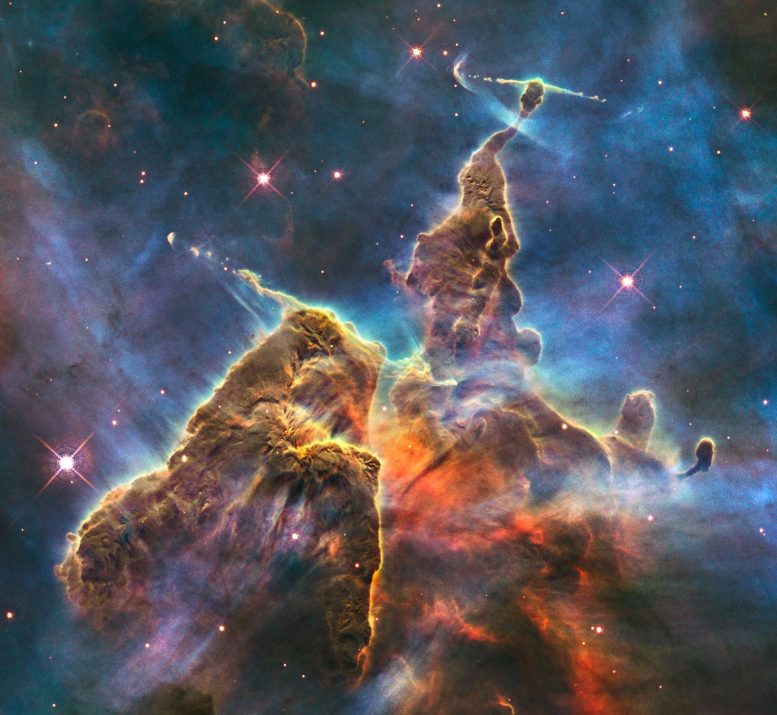
Hubble Space Telescope image of a turbulent cosmic pinnacle lies within a tempestuous stellar nursery called the Carina Nebula, located 7500 light-years away in the southern constellation of Carina. Credit: NASA, ESA, M. Livio and the Hubble 20th Anniversary Team (STScI)
Astronomers have combined hundreds of images, including ones in the infrared spectrum, to provide the most detailed view of the Carina Nebula, a stellar nursery located about 7,500 light-years from Sol.
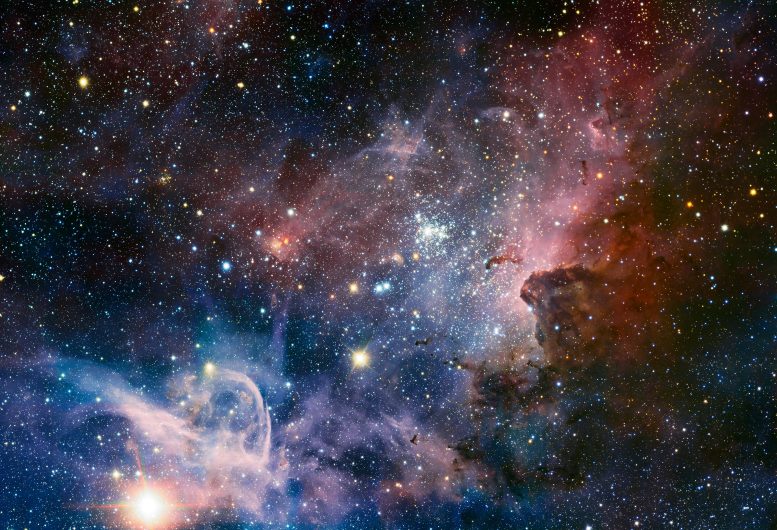
This broad image of the Carina Nebula, a region of massive star formation in the southern skies, was taken in infrared light using the HAWK-I camera on ESO’s Very Large Telescope. Many previously hidden features, scattered across a spectacular celestial landscape of gas, dust, and young stars, have emerged. Credit: ESO/T. Preibisch
The Carina Nebula surrounds several open clusters, Eta Carinae and HD 93129A, two of the most massive and luminous stars in the Milky Way are among these. It’s in the constellation of Carina, in the Carina-Sagittarius Arm of the Milky Way.
The Carina Nebula is four times larger and brighter than the Orion Nebula, but it’s less well known since it’s located in the Southern Hemisphere. It was discovered by Nicolas Louis de Lacaille.
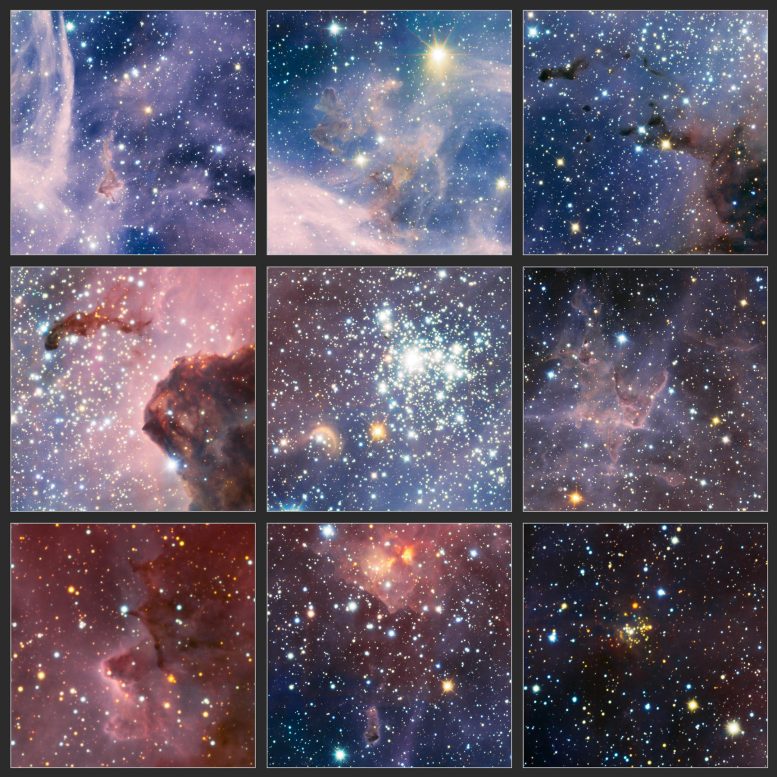
These highlights are part of a broader view of the Carina Nebula, a region of massive star formation in the southern skies, which was taken in infrared light using the HAWK-I camera on ESO’s Very Large Telescope. This stellar nursery contains dark nebulae where new stars are forming, clusters of young stars, and many curious features sculpted from huge clouds of gas and dust. The image section at the center shows the star cluster Trumpler 14 and also reveals a strange golden crescent-shaped cloud. The cutout at the center of the bottom row features a dark cloud known as the caterpillar at the bottom and obscured young stars at the top. The small cluster of stars, appearing yellow in the cutout at the lower right, was discovered in this image. Credit: ESO/T. Preibisch
The nebula spreads across 150 light-years, and the new view reveals hundreds of thousands of stars, some of which are 10 times less massive than Sol, that were previously obscured by dust.
Astronomers knew that these stars were lurking behind other, brighter stars, but none of the previous images show the extreme details of the one above. Using the images, researchers have confirmed that star formation occurs mostly on the borders of giant globules of gas and dust, rather than deep inside the nebula itself.
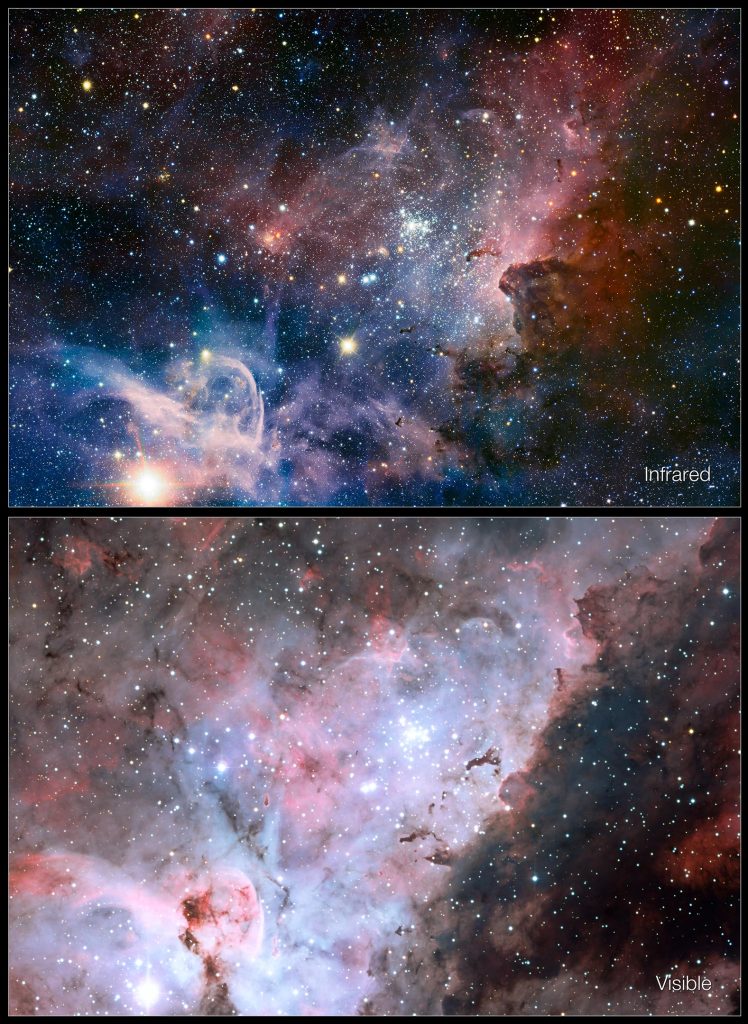
This picture of the Carina Nebula, a region of massive star formation in the southern skies, compares the view in visible light with a new picture taken in infrared light. The visible-light view (lower panel) comes from the MPG/ESO 2.2-meter telescope at the La Silla Observatory and the new infrared picture (upper) comes from the HAWK-I camera on ESO’s Very Large Telescope. Many new features that are not seen at all in visible light can be seen in great detail in the new sharp infrared image from the VLT. Credit: ESO/T. Preibisch
They published their results in Astronomy & Astrophysics, and they also hint that stars tens or hundreds of times larger than Sol drive the star formation in Carina. The HAWK-I infrared camera at Europe’s Very Large Telescope, a four-telescope array in Chile, were used to capture these images.
This zoom sequence starts with a broad view of the Milky Way and closes in on the Carina Nebula, an active stellar nursery about 7500 light-years from Earth. In the final sequence we see a new image taken in infrared light using the HAWK-I camera on ESO’s Very Large Telescope. Many previously hidden features, scattered across a spectacular celestial landscape of gas, dust and young stars, have emerged. Credit: ESO/Nick Risinger (skysurvey.org)/Digitized Sky Survey 2 Music: John Dyson (from the album Moonwind)
Reference: “Deep wide-field near-infrared survey of the Carina Nebula” by T. Preibisch, T. Ratzka1, B. Kuderna, H. Ohlendorf, R. R. King2, S. Hodgkin, M. Irwin, J. R. Lewis, M. J. McCaughrean and H. Zinnecker, 4 May 2011, Astronomy & Astrophysics.
DOI: 10.1051/0004-6361/201116781
This video sequence takes a close look at the Carina Nebula, a region of massive star formation in the southern skies and compares the view in visible light with a new picture taken in infrared light. The visible-light view comes from the MPG/ESO 2.2-meter telescope at the La Silla Observatory and the new infrared picture comes from the HAWK-I camera on ESO’s Very Large Telescope. Many new features that are not seen at all in visible light can be seen in great detail in the new sharp infrared image from the VLT. Credit: ESO/T. Preibisch


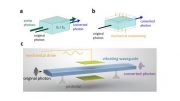
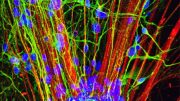
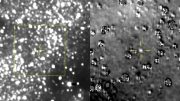
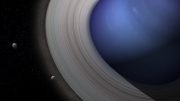
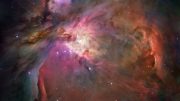


Be the first to comment on "Astronomers Combine Hundreds of Images of Carina Nebula to Reveal Thousands of Stars in Stellar Nursery"